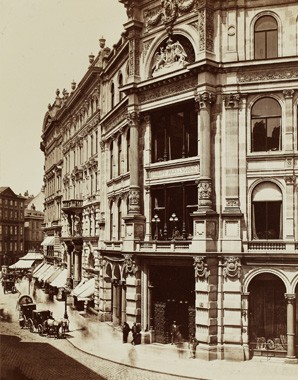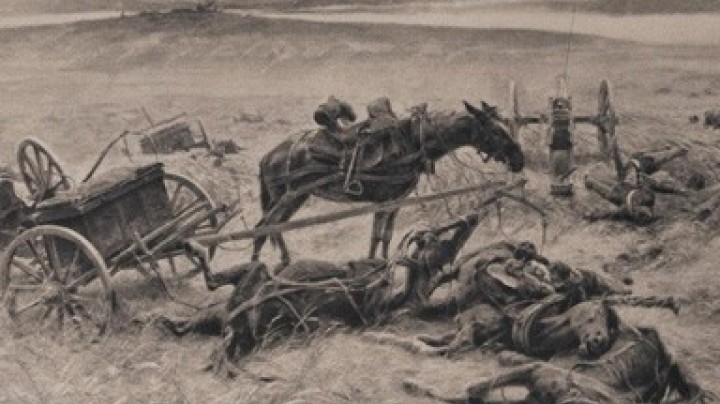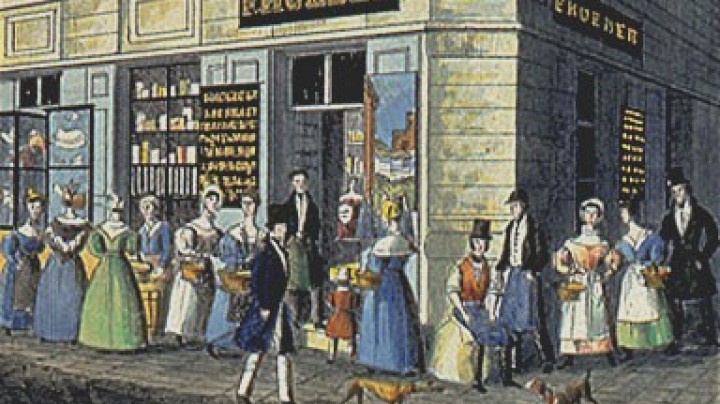Shopping venues – Inequalities in consumption
For some people Vienna was the El Dorado of shopping – after all, there were enough predecessors of today’s shopping centres to be found here. For others it was a struggle to ensure that they had something to eat on the table.
Where and how people did their shopping is a good indicator of social differences. While the poorer classes had to spend most of their income on food, the members of the imperial family, the higher ranks of the aristocracy and the haute bourgeoisie were eager to buy luxury goods. As a result there was a wide range of opportunities and places to buy goods. Catering for the Court was done by specially appointed suppliers (Hof- und Kammerlieferanten), and they also provided the expensive luxury products to satisfy the requirements of the higher ranks of the aristocracy and the haute bourgeoisie. The poorer classes bought what they needed in the way of food, clothes and household goods at local markets, in small general stores or from street traders.
In the course of the nineteenth century co-operative societies were founded as a form of self-help. They made it possible for the lower income groups to buy goods cheaply by cutting out the middlemen. The number of these societies – there were almost 1,500 of them in the Austrian half of the Empire in 1913 – shows the great demand for cheap products. The same trend can be seen in the way that retail chains were founded in the second half of the nineteenth century: these shops had several branches and could thus offer products at cheaper prices. However, unlike the situation in other European metropolises like Paris and London, in Vienna the dominant structure continued to be based on small businesses.




















